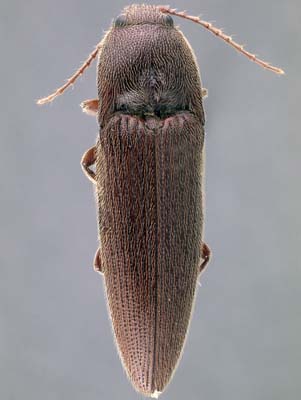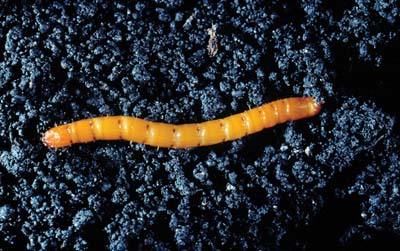To save the Web-optimized images shown below to your hard drive:
|
Click to access Display and Print quality images. |
|
Click to access Display and Print quality images. |
Copyright © 2005 University of Florida
Vegetable crops that are damaged include cabbage, corn, lettuce, pepper, potato, sweetpotato, and sweet corn. Damage is caused by the larvae feeding below ground on plant tissue. They will kill young plants in some situations and tend to prefer areas in the field that are high in moisture. Insecticides are often applied to prevent crops from being injured by the larvae. The most common approach is to apply liquid or granular formulations at planting and to incorporate the insecticide near the seeds or seedlings. Cultural practices include crop rotation, fallowing, and flooding. Wireworm populations may be determined by sampling techniques such as baiting.
Images
To save the Web-optimized images shown below to your hard drive:

Corn wireworm, Melanotus communis, adult.
(Photographer: L. Buss, University of Florida)
Click to access Display and Print quality images.

Corn wireworm, Melanotus communis, larva.
(Photographer: J. Capinera, University of Florida)
Click to access Display and Print quality images.
Copyright © 2005 University of Florida